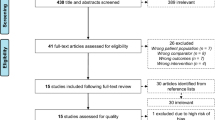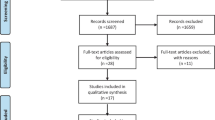Abstract
Background
Preoperative nutritional status and physical function are important predictors of mortality and morbidity after cardiac surgery. However, the influence of nutritional status before cardiac surgery on physical function and the progress of postoperative rehabilitation requires clarification.
Aims
To determine the effect of preoperative nutritional status on preoperative physical function and progress of rehabilitation after elective cardiac surgery.
Methods
We enrolled 131 elderly patients with mean age of 73.7 ± 5.8 years undergoing cardiac surgery. We divided them into two groups by nutritional status as measured by the Geriatric Nutritional Risk Index (GNRI): high GNRI group (GNRI ≥ 92, n = 106) and low GNRI group (GNRI < 92, n = 25). Physical function was estimated by handgrip strength, knee extensor muscle strength (KEMS), the Short Physical Performance Battery (SPPB), and 6-minute walk test (6MWT). Progress of postoperative rehabilitation was evaluated by the number of days to independent walking after surgery, length of stay in the ICU, and length of hospital stay.
Results
After adjusting for potential confounding factors, preoperative handgrip strength (P = 0.034), KEMS (P = 0.009), SPPB (P < 0.0001), and 6MWT (P = 0.012) were all significantly better in the high GNRI group. Multiple regression analysis revealed that a low GNRI was an independent predictor of the retardation of postoperative rehabilitation.
Conclusions
Preoperative nutritional status as assessed by the GNRI could reflect perioperative physical function. Preoperative poor nutritional status may be an independent predictor of the retardation of postoperative rehabilitation in patients undergoing elective cardiac surgery.

Similar content being viewed by others
References
Leung Wai Sang S, Chaturvedi RK, Iqbal S et al (2012) Functional quality of life following open valve surgery in high-risk octogenarians. J Card Surg 27:408–414
Arai H, Ouchi Y, Toba K et al (2015) Japan as the front-runner of super-aged societies: perspectives from medicine and medical care in Japan. Geriatr Gerontol Int 15:673–687
Committee for Scientific Affairs, The Japanese Association for Thoracic Surgery, Masuda M, Kuwano H et al (2014) Thoracic and cardiovascular surgery in Japan during 2012: annual report by The Japanese Association for Thoracic Surgery. Gen Thorac Cardiovasc Surg 12:734–764
Natarajan A, Samadian S, Clark S (2007) Coronary artery bypass surgery in elderly people. Postgrad Med J 83:154–158
Markou AL, van der Windt A, van Swieten HA et al (2008) Changes in quality of life, physical activity, and symptomatic status one year after myocardial revascularization for stable angina. Eur J Cardiothorac Surg 34:1009–1015
Bridges CR, Edwards FH, Peterson ED et al (2003) Cardiac surgery in nonagenarians and centenarians. J Am Coll Surg 197:347–356
Correia MI, Waitzberg DL (2003) The impact of malnutrition on morbidity, mortality, length of hospital stay and costs evaluated through a multivariate model analysis. Clin Nutr 22:235–239
de Rooij SE, Govers AC, Korevaar JC et al (2008) Cognitive, functional, and quality-of-life outcomes of patients aged 80 and older who survived at least 1 year after planned or unplanned surgery or medical intensive care treatment. J Am Geriatr Soc 56:816–822
Afilalo J, Eisenberg MJ, Morin JF et al (2010) Gait speed as an incremental predictor of mortality and major morbidity in elderly patients undergoing cardiac surgery. J Am Coll Cardiol 56:1668–1676
Robinson TN, Wu DS, Sauaia A et al (2013) Slower walking speed forecasts increased postoperative morbidity and 1-year mortality across surgical specialties. Ann Surg 258:582–588
Izawa KP, Watanabe S, Osada N et al (2009) Handgrip strength as a predictor of prognosis in Japanese patients with congestive heart failure. Eur J Cardiovasc Prev Rehabil 16:21–27
Dimaria-Ghalili RA (2008) Nutrition risk factors in older coronary artery bypass graft patients. Nutr Clin Pract 23:494–500
van Venrooij LM, de Vos R, Borgmeijer-Hoelen MM et al (2008) Preoperative unintended weight loss and low body mass index in relation to complications and length of stay after cardiac surgery. Am J Clin Nutr 87:1656–1661
Bouillanne O, Morineau G, Dupont C et al (2005) Geriatric nutritional risk index: a new index for evaluating at-risk elderly medical patients. Am J Clin Nutr 82:777–783
Kinugasa Y, Kato M, Sugihara S et al (2013) Geriatric nutritional risk index predicts functional dependency and mortality in patients with heart failure with preserved ejection fraction. Circ J 77:705–711
Abd-El-Gawad WM, Abou-Hashem RM, El Maraghy MO et al (2014) The validity of geriatric nutrition risk index: simple tool for prediction of nutritional-related complication of hospitalized elderly patients. Comparison with mini nutritional assessment. Clin Nutr 33:1108–1116
Schaubert KL, Bohannon RW (2005) Reliability and validity of three strength measures obtained from community-dwelling elderly persons. J Strength Cond Res 19:717–720
Martin HJ, Yule V, Syddall HE et al (2006) Is hand-held dynamometry useful for the measurement of quadriceps strength in older people? A comparison with the gold standard Bodex dynamometry. Gerontology 52:154–159
Bohannon RW (1997) Reference values for extremity muscle strength obtained by hand-held dynamometry from adults aged 20 to 79 years. Arch Phys Med Rehabil 78:26–32
Guralnik JM, Simonsick EM, Ferrucci L et al (1994) A short physical performance battery assessing lower extremity function: association with self-reported disability and prediction of mortality and nursing home admission. J Gerontol 49:M85–M94
ATS Committee on Proficiency Standards for Clinical Pulmonary Function Laboratories (2002) ATS statement: guidelines for the six-minute walk test. Am J Respir Crit Care Med 166:111–117
Costa HS, Lima MM, de Sousa GR et al (2014) Functional capacity and risk stratification by the six-minute walk test in Chagas heart disease: comparison with Cardiopulmonary Exercise Testing. Int J Cardiol 177:661–663
JCS Joint Working Group (2014) Guidelines for rehabilitation in patients with cardiovascular disease (JCS 2012). Circ J 78:2022–2093
Izawa KP, Watanabe S, Oka K (2015) Relationship of thresholds of physical performance to nutritional status in older hospitalized male cardiac patients. Geriatr Gerontol Int 15:189–195
Doust J, Lehman R, Glasziou P (2006) The role of BNP testing in heart failure. Am Fam Physician 74:1893–1898
Okamura T, Hayakawa T, Kadowaki T et al (2004) A combination of serum low albumin and above-average cholesterol level was associated with excess mortality. J Clin Epidemiol 57:1188–1195
Beutler E, Waalen J (2006) The definition of anemia: what is the lower limit of normal of the blood hemoglobin concentration? Blood 107:1747–1750
Gabay C, Kushner I (1999) Acute-phase proteins and other systemic responses to inflammation. N Engl J Med 340:448–454
DiMaria-Ghalili RA, Sullivan-Marx EM, Compher C (2014) Inflammation, functional status, and weight loss during recovery from cardiac surgery in older adults: a pilot study. Biol Res Nurs 16:344–352
Demers C, McKelvie RS, Negassa A et al (2001) Reliability, validity, and responsiveness of the six-minute walk test in patients with heart failure. Am Heart J 142:698–703
Cahalin LP, Mathier MA, Semigran MJ et al (1996) The six-minute walk test predicts peak oxygen uptake and survival in patients with advanced heart failure. Chest 110:325–332
Messika-Zeitoun D, Johnson BD, Nkomo V et al (2006) Cardiopulmonary exercise testing determination of functional capacity in mitral regurgitation: physiologic and outcome implications. J Am Coll Cardiol 47:2521–2527
Kamiya K, Mezzani A, Hotta K et al (2014) Quadriceps isometric strength as a predictor of exercise capacity in coronary artery disease patients. Eur J Prev Cardiol 21:1285–1291
Campbell TM, Vallis LA (2014) Predicting fat-free mass index and sarcopenia in assisted-living older adults. Age (Dordr) 36:9674
Little JP, Phillips SM (2009) Resistance exercise and nutrition to counteract muscle wasting. Appl Physiol Nutr Metab 34:817–828
Acknowledgments
We thank the staff members of Kobe University Hospital who collaborated in this study. The data of this study were previously presented at the 79th Annual Scientific Meeting of the Japanese Circulation Society.
Author information
Authors and Affiliations
Corresponding author
Ethics declarations
Conflict of interest
The authors declare that there are no conflicts of interest.
Statement of human and animal rights
The participants received oral explanations of the research procedures from the researchers. This study was approved by the Kobe University Institutional Committee on Human Research.
Informed consent
Written informed consent was obtained from each patient.
Funding
This research received no grant from any funding agency in the public, commercial, or not-for-profit sectors.
Rights and permissions
About this article
Cite this article
Ogawa, M., Izawa, K.P., Satomi-Kobayashi, S. et al. Poor preoperative nutritional status is an important predictor of the retardation of rehabilitation after cardiac surgery in elderly cardiac patients. Aging Clin Exp Res 29, 283–290 (2017). https://doi.org/10.1007/s40520-016-0552-3
Received:
Accepted:
Published:
Issue Date:
DOI: https://doi.org/10.1007/s40520-016-0552-3




